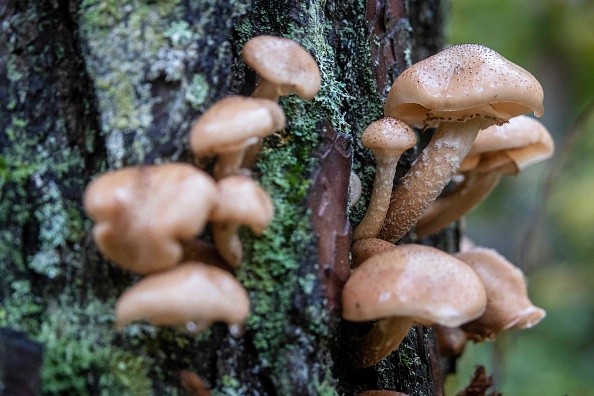A University of Stirling Honorary Professor has succeeded in resolving a major problem in the world's pursuit for net-zero emissions: how to bring together tree planting and food production.

Major Conflict in World's Quest For Net Zero
In Mexico, Dr. Paul Thomas discovered that inoculating native trees with an edible fungus may provide more protein per hectare than pasture-raised beef while also reforesting places, storing carbon, and restoring biodiversity at once.
The promise made by world leaders to eliminate deforestation by 2030 was one of the major achievements of the global climate conference COP26. Trees are mostly felled in order to provide food for the world's expanding population, according to Phys.org.
In South America, for example, almost 85% of the rainforest has been cut down to make room for pasture or the cultivation of animal feed for cattle production.
Land-use conflict is the dominant cause of deforestation globally, with demand for agricultural production predicted to grow for years to come, according to Dr. Thomas, who is connected to the Faculty of Natural Sciences at Stirling.
Also Read : Future Tech Can Achieve Net Zero Goals Without Sacrificing Quality of Life, John Kerry Says
How Trees Enhance Biodiversity and Store Carbon
According to scientists, this research opens up a whole new way of thinking about land use, allowing for the production of food - in this instance, an edible fungus that is already popular in Mexico - along with the carbon sequestration, biodiversity, and conservation objectives that forestry provides.
The blue-colored fungus, Lactarius indigo was discovered to generate 7.3kg of protein per hectare, compared to 4.8-7.0kg for pasture cattle. Soya may yield more than 200kg per hectare, but it is farmed as a monoculture, reducing biodiversity and soil fertility and releasing carbon into the sky.
Trees, on the other hand, increase biodiversity and carbon storage. Lactarius indigo is cultivated on natural pine and oak trees, which offer habitat for animals, birds, insects, and other plants.
Plans to Grow More Mushrooms
Dr. Luis-Bernardo Vazquez of the Colegio de la Frontera Sur in Chiapas, Mexico, collaborated on the study, which compiled prior studies, including growth trials, to identify places that demonstrated resistance to various climate change scenarios.
Dr. Thomas said they wanted to identify regions where they could be certain the mushroom could be cultivated in the long run. According to Thomas, the next step in their initiative will be to enable locals cultivate the mushrooms that are now being gathered and sold at the market. This will help rural development by restoring degraded landscapes while generating food.
In January, Dr. Thomas will begin a second, distinct project to model producing mushrooms that can thrive in northern Europe's climate with local tree species.
The paper was published in the journal Science of the Total Environment with the title "A novel approach to combine food production with carbon sequestration, biodiversity, and conservation goals."
Related Article : Report Shows that Asia's Road to Net-Zero May Cost Up to $12 Trillion
For more news, updates about net-zero emission and similar topics don't foget to follow Nature World News!
© 2025 NatureWorldNews.com All rights reserved. Do not reproduce without permission.





